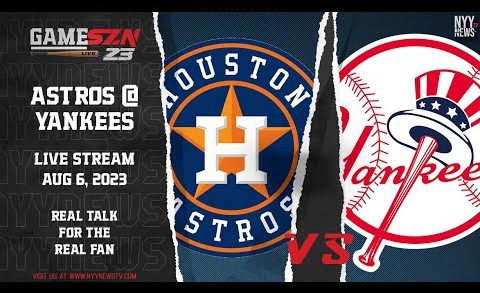The Yankees are standing behind Gary Sanchez, making him the Wild Card starter, but is he the catcher of the future?
NEW YORK — The word “catch” is in Gary Sanchez‘s job description, but the Yankees insist they aren’t concerned about the difficulty he’s had doing it.
Stopping the baseball is “down in terms of the priority list of things,” general manager Brian Cashman told NJ Advance Media. “Believe it or not, that falls down (the list) compared to the other things he brings to the table, including his bat.”
So, Wednesday, in a win-or-go home playoff game against the Oakland A’s, Sanchez will start in the American League Wild Card Game, when a passed ball at the wrong time, or a slow attempt to block a wild pitch could send the Yankees home for the winter.
If the 26-year-old allows a passed ball — like he has a major-league-worst 18 times this season, five more than any other catcher — the Yankees hope he’ll make up for it with his arm.
If a ball ricochets off his glove and a runner advances or scores, the Yankees hope he’ll make up for it with his bat.
The Yankees hope.
They feel they have no choice.
This ‘says a lot’ about Judge’s wrist
In Sanchez, they see a superior talent to their alternatives — backups Austin Romine and Kyle Higashioka — and you’d be hard-pressed to find someone who disagrees. At 6-foot-3 and 230 pounds, Sanchez has a Howitzer for an arm, the strength of a linebacker and the athleticism to be stopper behind the plate.
But some within the organization and rival talent evaluators wonder if Sanchez’s long-term future is behind the plate, where he just seems to be getting worse, or if he’s destined to wind up as a designated hitter.
Whether he’s even a good enough hitter to warrant a DH job has become a big if, too, with Sanchez’s batting average under .200.
These worries were there when Yankees gave him $3 million at age 16 in 2009, worries that have persisted throughout his tumultuous minor-league career.
These questions — particularly among a fan base used to MVPs and All-Stars at the position (Yogi Berra, Thurman Munson and Jorge Posada to name a few) — have never been louder than now, with Sanchez nearing the end of an injury-plagued season in which he’s been bad offensively and defensively.
Catcher or designated hitter?
Can Sanchez catch long-term? “Don’t know. Up to him to tell us,” one Yankees official said.
Sanchez, via the team’s Spanish-language translator, said he wants to remain a catcher.
“Defensively, I want to improve in everything,” he said. “The work continues. The focus is the same and that’s being better all around.”
But maybe Sanchez is telling the Yankees his future — with stats.
On one hand, they’re ugly.
Sanchez’s high passed balls total is one thing. That he’s done it in just 653 innings behind the plate is another. Boston’s Sandy Leon and Houston’s Martin Maldonado each have 13 passed balls this season, the game’s second-highest total. It’s taken Leon 685 2/3 innings to get there, or 32 2/3 innings more than Sanchez. It’s taken Maldonado 967 2/3 innings, or in 314 2/3 innings more than Sanchez.
Sanchez has also been behind the plate for 45 wild pitches this season. That’s the fifth-most in baseball. While wild pitches are generally blamed on pitchers, good defensive catchers can curb the totals.
Neither of these problems are new for Sanchez, who tied for the league lead in passed balls (16) last year and was catching for the second-most wild pitches (53).
Some stats point to a gifted backstop, however.
Sanchez’s arm keeps pitchers from worrying about stolen bases. His throws have averaged 86.8 mph this year, according to MLB’s Statcast. That’s the fourth fastest among catchers with at least 10 caught-stealing attempts to second base. Last year, he averaged 87.8 mph, or the third-fastest in the game.
He’s also helped pitchers steal at least some strikes. According to Baseball Prospectus, Sanchez’s pitch framing — or his ability to persuade umpires to call strikes — has helped prevent 4.8 runs this season, the same number as Romine.
Why hasn’t he put it together yet?
By now, Sanchez’s minor-league struggles with work ethic have been well-chronicled. Sanchez has owned up to them. But they could be a major reason for his slow growth with the glove, three American League scouts said. While hailed as a top prospect by respected publications, including Baseball America, Sanchez sometimes loafed and occasionally defied coaches.
As an 18-year-old at Low-A Charleston, he refused to warm up a pitcher. The Yankees demoted him to their player development complex in Tampa. In 2014, despite repeated admonishments from coaches and manager Tony Franklin, Sanchez didn’t run hard on a ground ball. Franklin suspended him.
“He had been told before,” Franklin said. “I didn’t think I had any alternative. So we took him out for about five days and he was miserable.”
Franklin pointed to that time frame as turning point for Sanchez.
“I think he learned his lesson,” Franklin said. “From that point, he started to mature.”
Sanchez’s performance was on the upswing after that. By most accounts, his approach to all aspects of his game turned more professional, and it reflected in his results. He bludgeoned Double-A and Triple-A pitching in 2015, earning his first call-up in September. In 2016, after losing the spring training backup catcher battle to Romine, Sanchez seized the starting job in early August from veteran Brian McCann and never looked back, even finishing second in the American League Rookie of the Year race despite just two months of games.
In 2017, Sanchez was one of baseball’s best overall catchers, his 33 home runs six greater than the runner-up at the position despite missing the first month of the season with a biceps strain.
Still, there were concerns.
In July, then-manager Joe Girardi replaced Sanchez at catcher with Romine for two games because he felt Sanchez needed to work on the mechanics that allow him to get down quickly enough to block balls. Then-bench coach Tony Pena at the time said when it came to Sanchez’s problems, “It’s about concentration.”
The benching was an unusual move for Girardi, who typically did all he could to shield players from criticism, and it reopened concerns over Sanchez’s longterm status at the position.
What might not have helped was the Yankees’ suggestion at about the same time that Sanchez should shed muscle mass in the offseason, raising questions about Sanchez’s general conditioning.
Conditioning questions
It was supposed to be different in 2018. A source close to Sanchez, who requested anonymity to speak freely, said he had lost weight in the offseason. Sanchez denied that in February, but said he did improve his flexibility and agility.
Nonetheless, Sanchez has struggled at the plate and behind it this year. And around June, he let his conditioning deteriorate, Cashman said, and he strained his groin after crossing first base on a ground ball in Tampa on June 24.
Cashman chalked Sanchez’s poor conditioning at the time up to the grind of the regular season and to Sanchez, big for catcher, still learning what works best for his body. The GM added that Sanchez was in “great shape” when he re-aggravated the groin injury July 23 — an embarrassing game for the catcher, who was lambasted by the media and fans when he didn’t run hard after a wild pitch or to first base on a ground ball.
“It’s part of a constant push and pull with all our athletes,” Cashman said, “where we want them to be and where they end up at times. Some days you have a guy show up, they can put on 5 pounds overnight. That’s rare, but it does happen. We’ve had a guy weigh in in spring training, all of a sudden he left the day before and he came back 7 pounds heavy. It’s like, ‘What did you do last night?’ That’s not Gary, but that has happened.”
Sanchez was asked if he thinks staying well conditioned has been a problem for him.
“You mean as an issue in thinking that I was overweight?” he said.
He added that he’s at about the same weight he was last season and that he’s using the same workout routine from then, too.
Manager Aaron Boone said Sanchez’s conditioning is a “work in progress.”
Asked if he thinks Sanchez takes it as seriously as the Yankees want him to, Boone said yes.
“And I think just from what he’s been through this year, from an injury standpoint, I think he understands the importance of staying always on top of that conditioning stuff, especially as you get older, your conditioning is really important if you want to be an everyday player,” Boone said.
Value — only if he’s hitting?
Talk to Yankees about Sanchez and his future and subject of Sanchez’s value invariably will come up.
“I think his value is, you have to look at it as a whole,” said bench coach Josh Bard, a 10-year major-league catcher. “It’s easy to say this guy can’t do this or can’t do that, so he can’t play (catcher). But I think we’ve tried to take a broader view.”
That broader view is that, despite Sanchez’s flaws as a catcher, his arm and bat should be positive difference makers.
“The trade-off is, with all the other strengths he brings to the table, he still far exceeds everybody else as far as we’re concerned,” Cashman said.
Sanchez’s biggest strength, though, is arguably his bat, which hasn’t been anything like the Yankees expected this season.
This regular season, Sanchez hit just .186 with 53 RBI and a .697 OPS. His 18 homers will be tied for the seventh-most among catchers in baseball, though he’s played just 89 games.

It’s reasonable to think that the stops and starts due to DL stints have kept Sanchez from consistency at the plate. Sanchez was productive for a stretch this season: In 22 games, from April 27 to May 25, Sanchez hit .271 with six homers, 12 RBI and a 1.030 OPS. But he’s hit .179 in 23 September games.
If Sanchez is a liability defensively and he doesn’t hit, what are the Yankees to do?
That’s a question that was there when the Yankees signed Sanchez, and one that haunts them now.
Brendan Kuty may be reached at [email protected]. Follow him on Twitter @BrendanKutyNJ. Find NJ.com Yankees on Facebook.
-
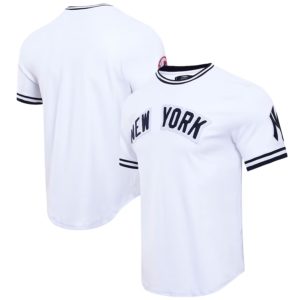
Men’s New York Yankees Pro Standard White Classic Chenille Double Knit T-Shirt
$92.99 Buy Now -
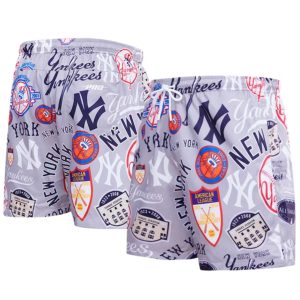
Men’s New York Yankees Pro Standard Gray Toss Logo Woven Shorts
$74.99 Buy Now -
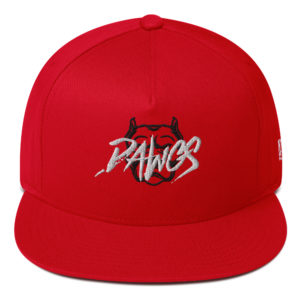
NYYNEWS Dawgs Snapback
$19.99 Add to cart -
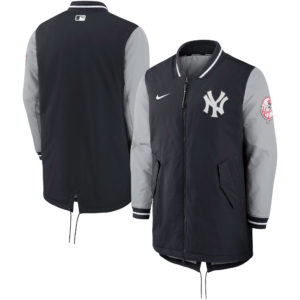
Men’s Nike Navy New York Yankees Dugout Performance Full-Zip Jacket
$220.00 Buy Now -

NYYNEWS Ruben Snapback
$14.50 Add to cart -
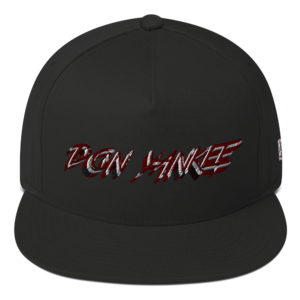
NYYNEWS Don Yankee Con El Bori Snapback
$14.50 Add to cart -

NYYNEWS Cap White
$21.00 Add to cart -

NYYNEWS Cap Red
$21.00 Add to cart -

NYYNEWS The Ryan Beck Show TTFN Tee
$17.00 – $26.00 Select options -
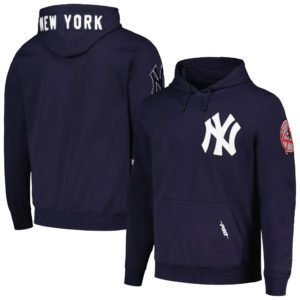
Men’s Pro Standard Navy New York Yankees Team Logo Pullover Hoodie
$100.00 Buy Now


